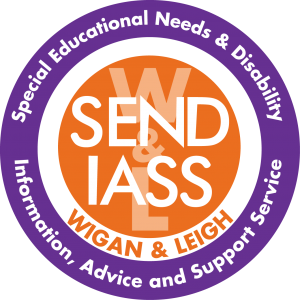Education, Health and Care Plan
Education, Health & Care (EHC) plans are for children and young people who have a particular educational need or disability that cannot be met by the support available through their school or college.
Most children and young people with special educational needs will have support given to them without the need for an EHC Plan through SEN support by their school. If you have concerns about your child’s progress it may be helpful to speak to the school or college about your worries. You should speak to the relevant class or subject teacher, the school SENCO or the person at the college responsible for SEN provision, and the head teacher or the principal.
What is an EHCP?
An Education, Health, and Care plan (EHC plan) is a legal document that describes a child or young person’s special educational needs, the support they need, and the outcomes they would like to achieve. An EHC plan can only be issued after a child, or young person has gone through an Education, Health, and Care needs assessment. Schools can request an assessment, or parents/carers can request one. Parents or carers can request an assessment by making a written request to the Local Authority. Within the request it should explain why you believe your child has or may have special educational needs and why you think they may need special educational provisions to be made through an EHC Plan. Click here for a model letter.
9.14 of the SEND Code of Practice says: “In considering whether an EHC needs assessment is necessary, the local authority should consider whether there is evidence that despite the early years’ provider, school or post-16 institution having taken relevant and purposeful action to identify, assess and meet the special educational needs of the child or young person, the child or young person has not made expected progress. inform their decision the local authority will need to take into account a wide range of evidence….”

Links to useful websites:
Model letter 1
https://www.ipsea.org.uk/making-a-request-for-an-ehc-needs-assessment
IPSEA – https://www.ipsea.org.uk/pages/category/education-health-and-care-plans
What is included in a EHCP?
An EHC plan legally must contain several separate sections. These sections are:
A: The views, interests, and aspirations of the child or young person.
B: The child’s or young person’s special educational needs.
C: Health needs related to their SEN or disability.
D: Social care needs related to their SEN or disability.
E: Planned outcomes for the child or young person.
F: Special educational provision. Provision must be specified for each need shown in section B.
G: Any health provision required that is related to their SEN or disability.
H1: Any social care provision that must be made for the child or young person under 18.
H2: Any other social care provision required that is related to their SEN or a disability.
I: The name and type of the school, maintained nursery school, post-16 institution, or other institution they will attend.
J: Details of how any personal budget will support particular outcomes and the provision it will be used for.
K: The advice and information gathered during the EHC needs assessment
EHCPs must be clear, concise, understandable, accessible, forward-looking, and outcomes-focused. Within the plan there should be SMART (specific, measurable, attainable, realistic, and time-bound) outcomes. It should be clear to parents/carers, young people, schools, colleges, and LAs, who must do what and when it has to happen.



